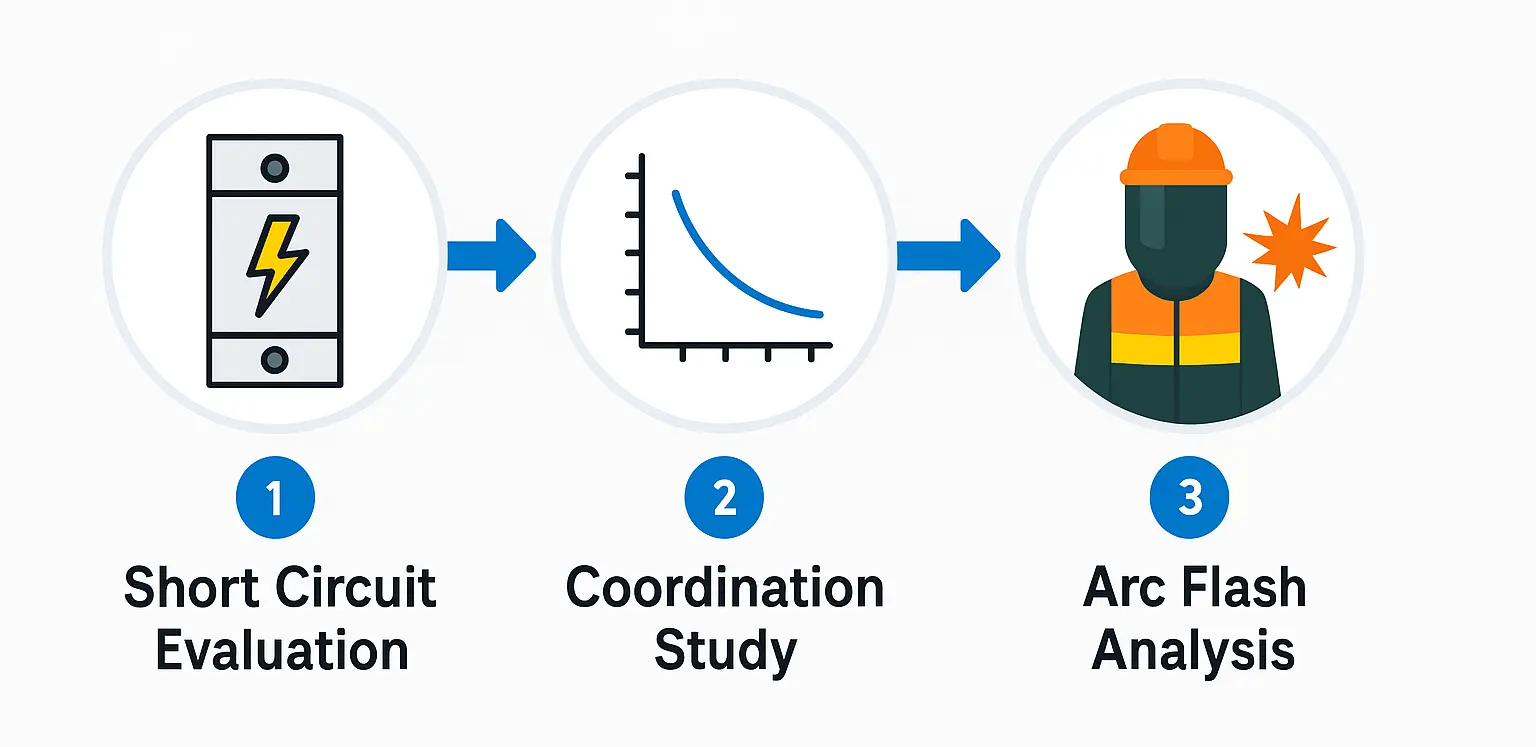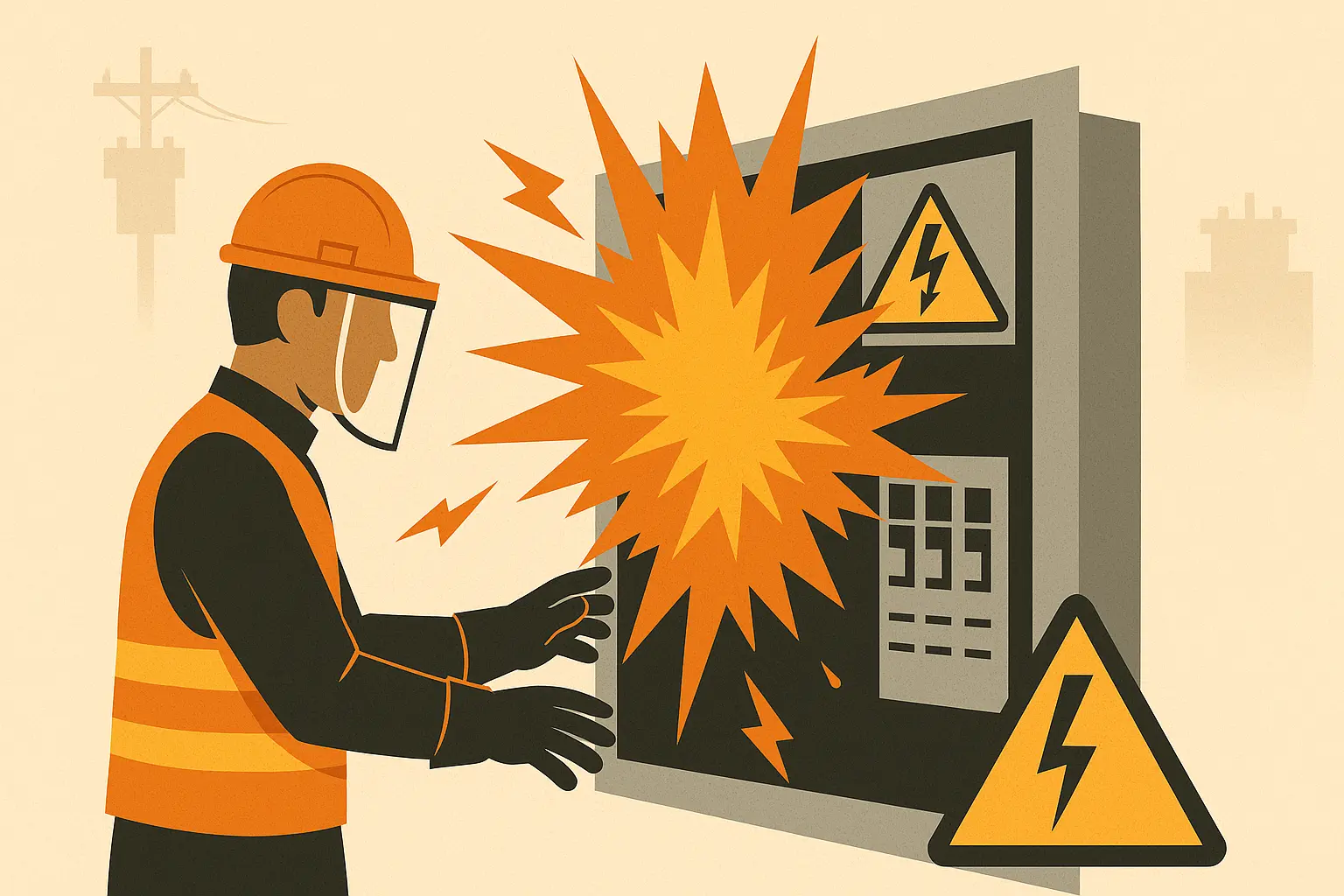Understanding Arc Flash Risk Assessments
An arc flash risk assessment evaluates potential hazards within a facility’s electrical system. The objective is to improve workplace safety by implementing proper category of PPE and safe work procedures when performing electrical work. Additionally, arc flash studies are required for facilities to comply with regulatory standards. For instance, the CSA Z462 (Canadian Standard for Workplace Electrical Safety) requires an arc flash assessment every five years or when system upgrades are installed.
Why Perform an Arc Flash Risk Assessment?
Conducting an arc flash risk assessment is essential for several reasons:
- Safety: Identifies risks to prevent serious injuries or fatalities.
- Compliance: Meets mandatory regulations such as NFPA 70E, CSA Z462, and CCOHS to avoid penalties and ensure employee safety.
- Equipment Protection: Protects electrical equipment from severe damage by identifying and mitigating potential fault conditions.
- Operational Efficiency: Proper coordination strategies minimize downtime, prevent unnecessary interruptions, and improve overall system reliability. For example, proper coordination reduces the time spent diagnosing and correcting faults.
Scope of an Arc Flash Assessment
An arc flash assessment typically includes three steps:
1. Short Circuit Evaluation
This initial step verifies that protective devices can safely interrupt maximum short circuit currents, ensuring downstream equipment remains protected during fault conditions. This foundational step is crucial for determining system safety limits.
2. Coordination Study
After confirming short circuit capabilities, a coordination study optimizes the sequence in which protective devices operate during faults. Shorter trip times reduce incident energy significantly, limiting the severity of potential arc flash incidents.
3. Arc Flash Analysis
This final stage calculates incident energy, determines appropriate personal protective equipment (PPE), and provides guidelines for arc flash labelling. It relies on accurate data from the short circuit evaluation and coordination study to ensure precise and reliable recommendations.

Typical Arc Flash Study Procedures
Procedures vary depending on whether the study is for a new construction or an existing facility:
New Construction:
- Electrical systems are modeled using design drawings.
- Short circuit and coordination studies occur during the design phase, optimizing the system for performance and safety.
- Arc flash analysis is completed before equipment commissioning, allowing implementation of safety measures from the start.
Existing Facility:
- Detailed site data collection, including equipment specifications, cable sizes and lengths, protective device settings, and operational conditions. This step requires a meticulous approach to ensure accurate modeling and reliable results.
- System modeling and analysis based on collected site data.
Final deliverables include:
- Comprehensive report detailing findings, recommendations, and technical analysis.
- A package of arc flash labels, including clear installation instructions and placement guidelines.
When to Update Your Arc Flash Study
According to CSA Z462, arc flash studies should be reviewed at least every five years or when significant system changes occur. Typical triggers include:
- Addition or removal of substantial electrical equipment, altering load distributions and protective schemes.
- Major upgrades to facility infrastructure, potentially affecting electrical safety.
- Changes in utility feeds or transformer sizing, altering available fault currents.
- Adjustments to protective device settings or ratings, which can influence protective performance.
- Facility expansions impacting load distribution and electrical system layout.
Who to Contact for Arc Flash Study Updates
To ensure thorough, accurate, and compliant updates, engage experienced electrical professionals or engineering firms specializing in power system analysis. Reliable firms such as Power Systems Experts provide detailed and compliant updates, helping maintain safety, compliance, and operational effectiveness. See more about how to obtain an arc flash risk assessment.

No responses yet